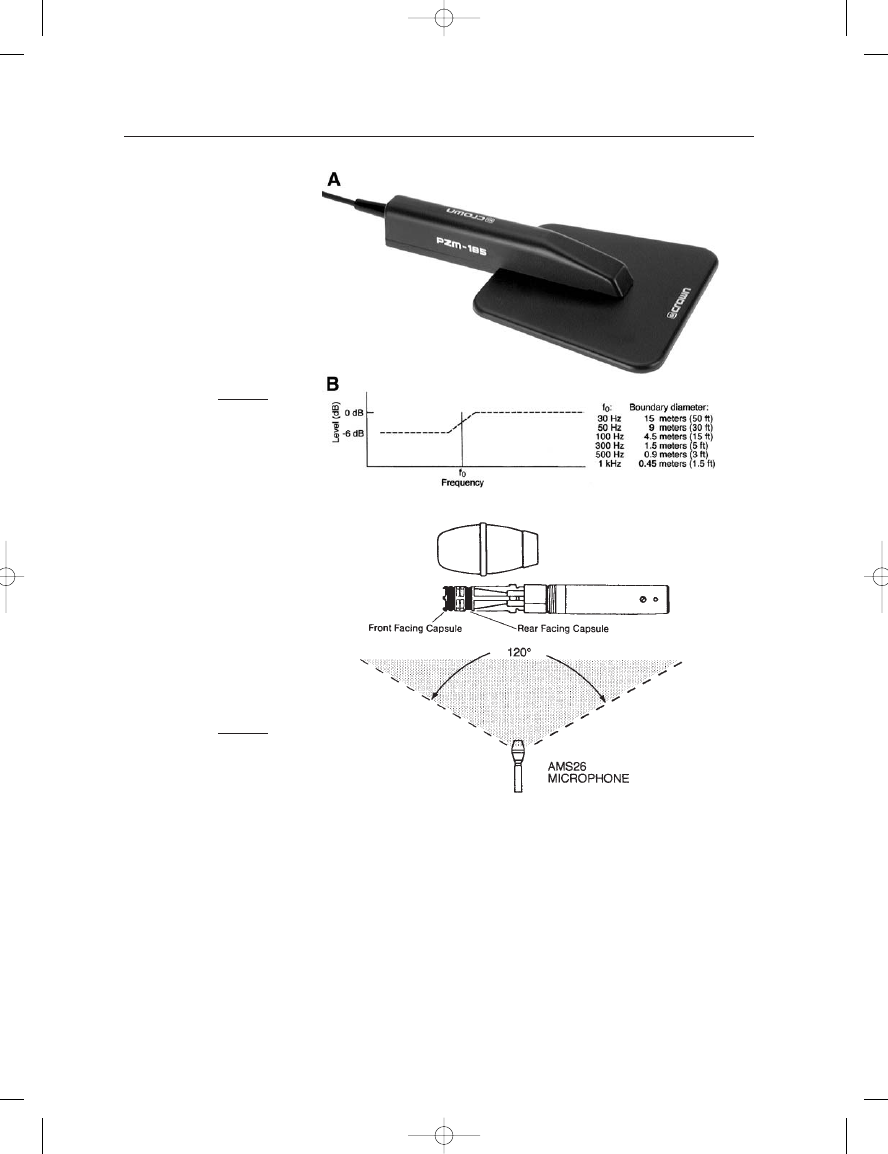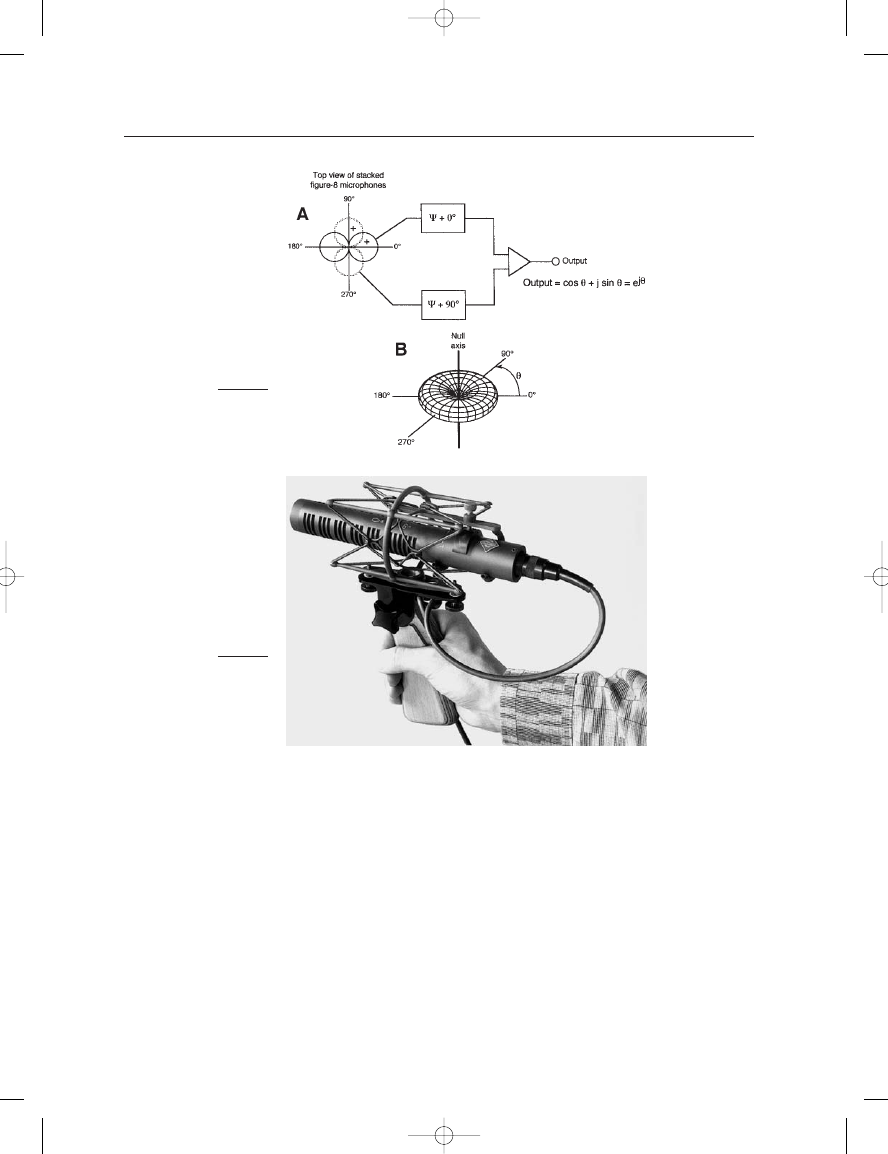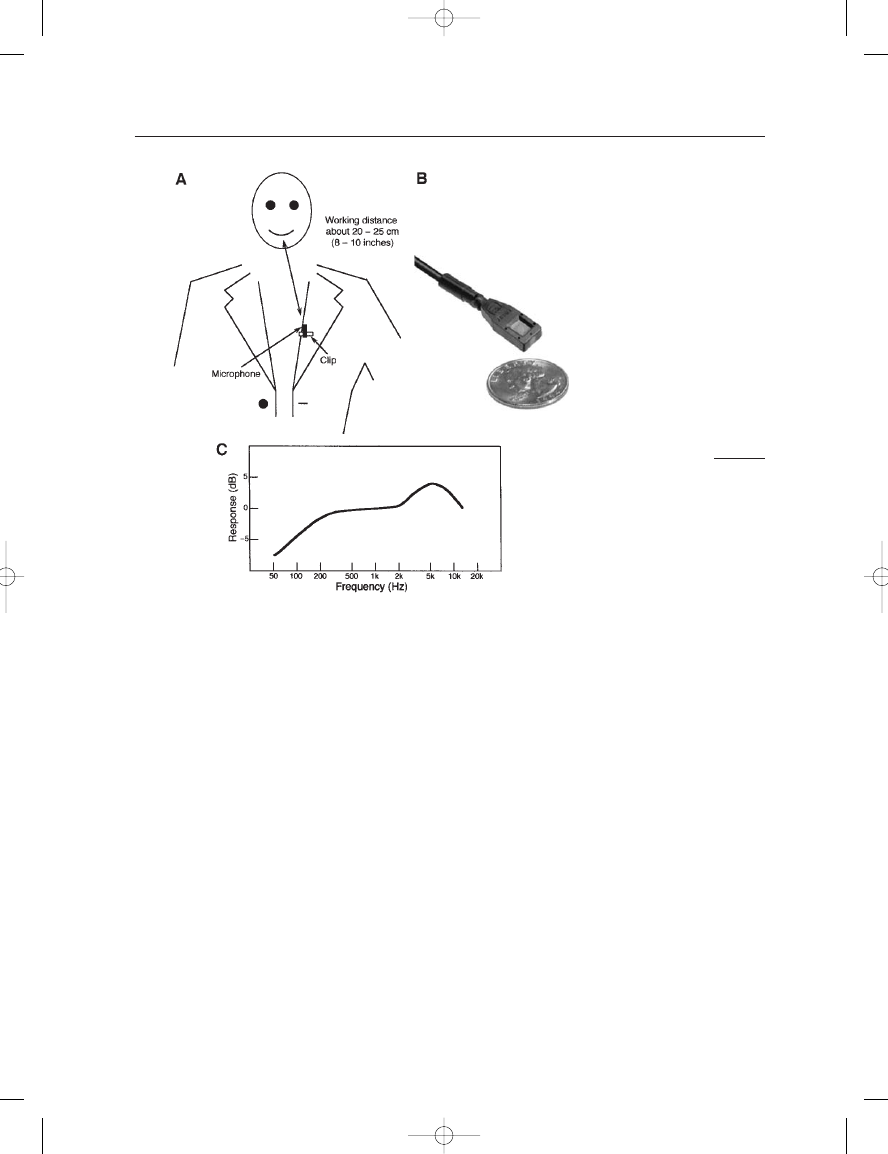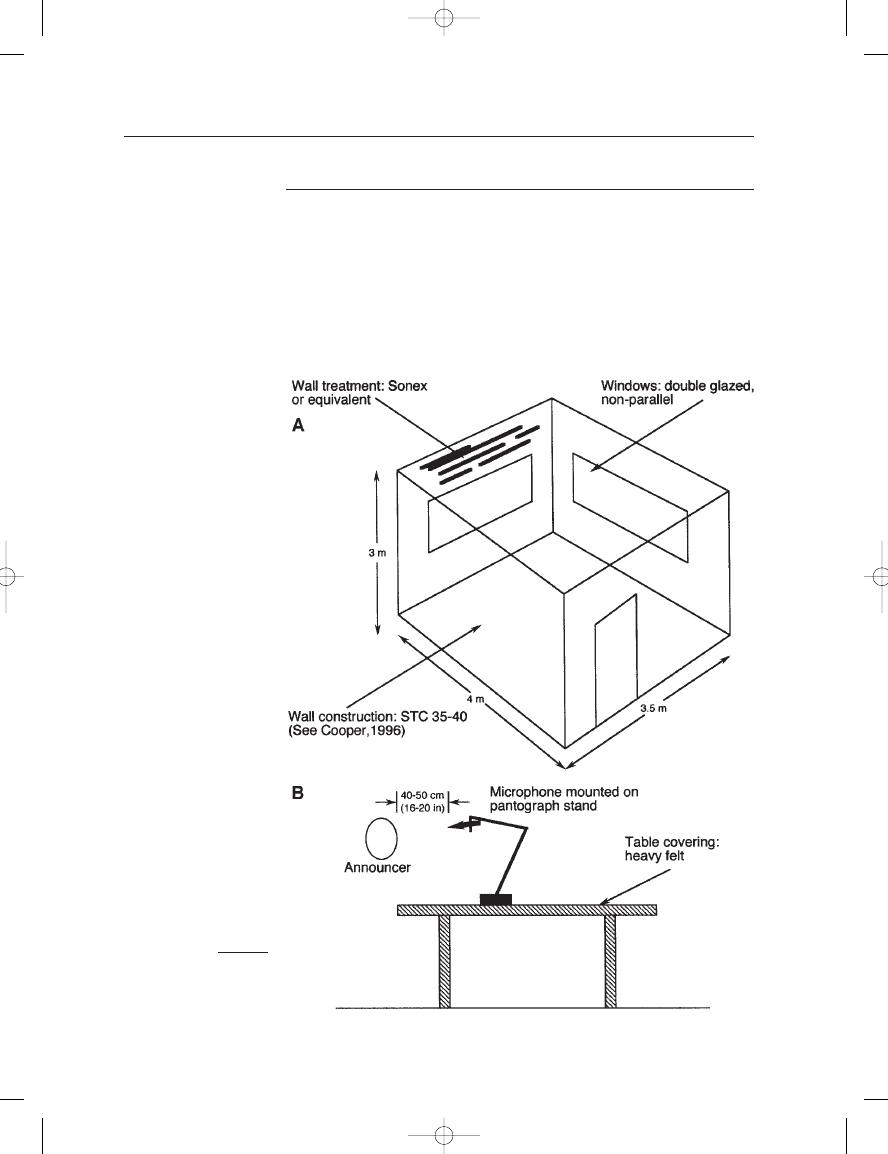ВУЗ: Казахская Национальная Академия Искусств им. Т. Жургенова
Категория: Книга
Дисциплина: Не указана
Добавлен: 03.02.2019
Просмотров: 17263
Скачиваний: 51

17: A Survey of Microphones in Broadcast and Communications
293
two elements, one forward-facing and the other rearward-facing. Only
the front element is used in direct speech pickup; the other element is used
only in a sensing circuit that allows the combination to reject random,
distant sounds, while gating on frontal speech sound. It is obvious that
the AMS type microphones must be used with AMS input circuitry for
proper system performance.
HEADSET-MICROPHONE COMBINATIONS
On convention floors and in other active areas covered by radio and tele-
vision broadcast, the roving reporter always wears a headset-microphone
FIGURE 17–2
The boundary layer
microphone (A); response
depends on size of mounting
baffle (B). (Photo courtesy of
Crown International.)
FIGURE 17–3
Details of the Shure
AMS26 microphone. (Data
courtesy of Shure Inc.)
Earg_17.qxd 14/9/04 3:00 PM Page 293

THE MICROPHONE BOOK
294
combination and carries a handheld vocal microphone for interviews.
Three communications channels are in use here: two for the reporter and
one for the interviewee. A typical unit with an electret microphone is
shown in Figure 17–4.
MICROPHONES FOR TELECONFERENCING OPERATIONS
In teleconferencing, two or more remote locations are connected via tele-
phone lines so that communication, both audio and low data-rate video,
is enabled. Each of the remote spaces will need a center microphone that
is broadly omnidirectional in the horizontal plane but limited in vertical
coverage. Olson (1939) describes a microphone with a toroidal pattern,
which is uniformly receptive to sound in the horizontal plane, but which
has substantial rejection in the vertical direction. The microphone is of
the interference and has polar response that varies with frequency.
Cooper and Shiga (1972), as part of their research in quadraphonic
sound, describe a relatively simple microphone with a toroidal pattern,
as shown in Figure 17–5. The system consists of two figure-8 micro-
phones oriented at 90
and placed one over the other. The two micro-
phones are processed through all-pass networks with a 90
phase
relationship between them, as shown.
HANDHELD MS MICROPHONE
The pistol-shaped microphone shown in Figure 17–6 is used for field news-
gathering activities. It can be quickly re-aimed as needed. The M-section
may be used alone for simple news gathering applications, while the
FIGURE 17–4
The headset-microphone
combination. (Photo
courtesy of AKG
Acoustics.)
Earg_17.qxd 14/9/04 3:00 PM Page 294

17: A Survey of Microphones in Broadcast and Communications
295
MS combination is very useful for sound effects recording, where stereo
remix in postproduction is often required.
THE TIE-TACK MICROPHONE
The present-day tie-tack microphone grew out of the relatively heavy
lavalier microphone which hung around the user’s neck. Those were also
the days before wireless microphones, so the whole assembly was a
clumsy one, with the user tethered by a cable. The heavy lavalier was
also susceptible to noise pickup through contact with the wearer’s cloth-
ing. The modern tie-tack microphone is very small electret model and can
be clipped directly to the wearer’s lapel or tie, as shown in Figure 17–7A.
Details of the microphone itself are shown at B. The tie-tack microphone
FIGURE 17–5
Conferencing microphone
with a toroidal directional
pattern.
FIGURE 17–6
A handheld MS
microphone for news and
effects gathering. (Photo
courtesy of Neumann/
USA.)
Earg_17.qxd 14/9/04 3:00 PM Page 295

THE MICROPHONE BOOK
296
is ubiquitous, barely visible in just about every talk or news show on
television. It is also the microphone of choice for lecturing in those situ-
ations where the talker must have freedom of movement. The response
pattern is normally omni, inasmuch as the operating distance is very
short. For feedback-prone environments a cardioid version can be used.
The microphone’s response is normally internally equalized as shown at
C; the rolloff at MF compensates for the chest cavity resonances of the
talker, and the HF boost compensates for the microphone’s position far
off-axis of the talker. Obviously, if a tie-tack microphone with a direc-
tional pattern is used, the main axis of the pattern must point toward the
talker’s mouth.
HIGH-DIRECTIONALITY MICROPHONES
Sports events on TV make extensive use of telephoto shots of on-field
action, and it is desirable to have a microphone that can produce a match-
ing sonic effect. Some of the larger rifle and parabolic microphones dis-
cussed in Chapter 6 are of some limited use on the playing field, as are
certain arrays discussed in Chapter 19. The “crack” of a baseball bat is a
great effect if it can be made loud and sharp enough. In many cases it has
been picked up with a small wireless microphone located at home plate.
FIGURE 17–7
The modern tie-tack
microphone: typical
application (A); photo of a
typical model (B); normal
equalization of a tie-tack
microphone (C). (Photo
courtesy of Crown
International.)
Earg_17.qxd 11/10/04 5:56 PM Page 296

17: A Survey of Microphones in Broadcast and Communications
297
IN-STUDIO ACOUSTICS AND PRACTICE
The announcer’s booth is constructed as shown in Figure 17–8A. The
space should be large enough for two persons so that interviews can be
done comfortably. The acoustical treatment should consist of absorptive
panels or other elements deep enough sufficiently to damp the lower
frequency range of a male announcer (the range down to about 125 Hz),
and the space should be free of any small room sonic coloration. Double
FIGURE 17–8
Radio announcer’s booth:
construction details (A);
microphone usage (B).
Earg_17.qxd 14/9/04 3:00 PM Page 297